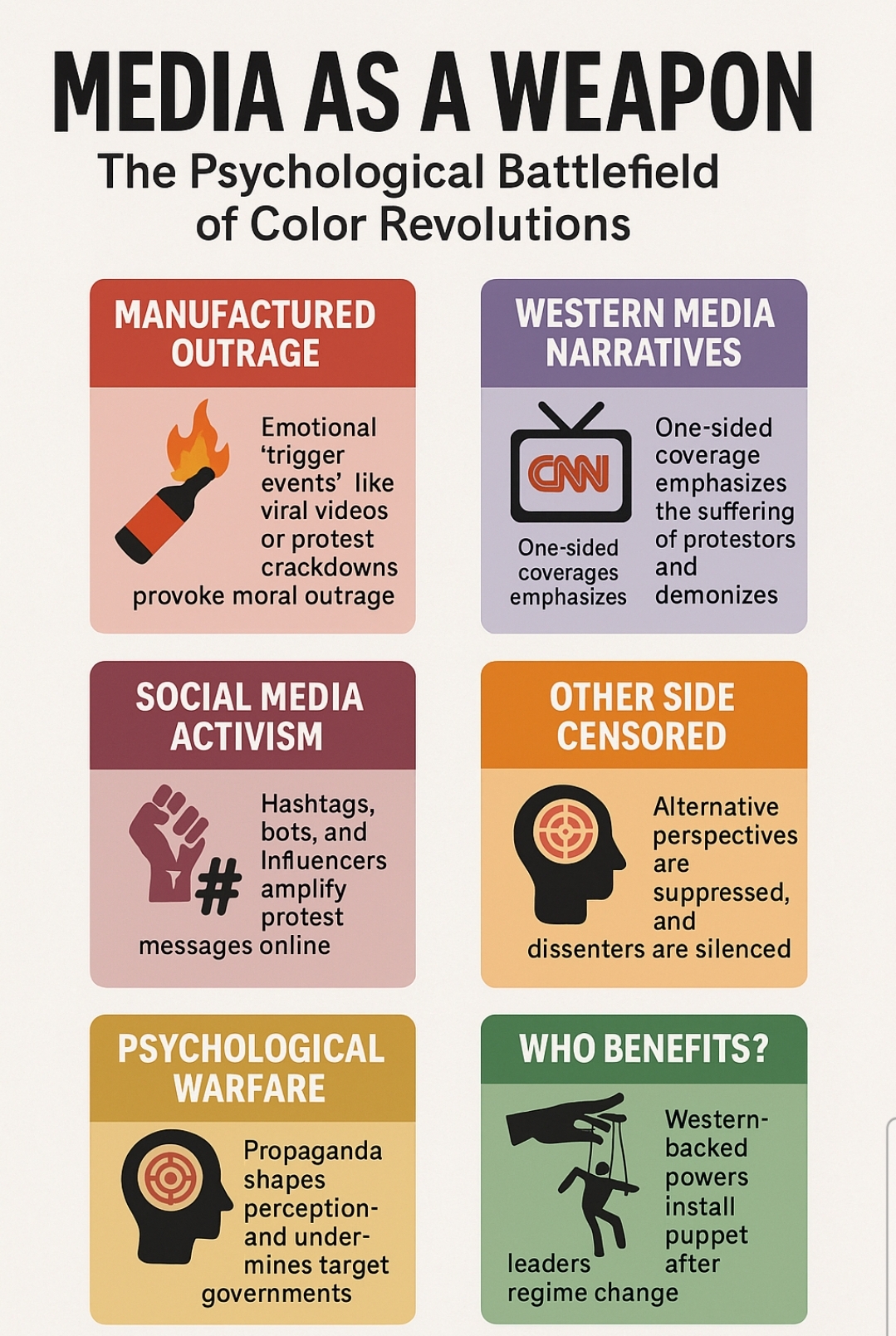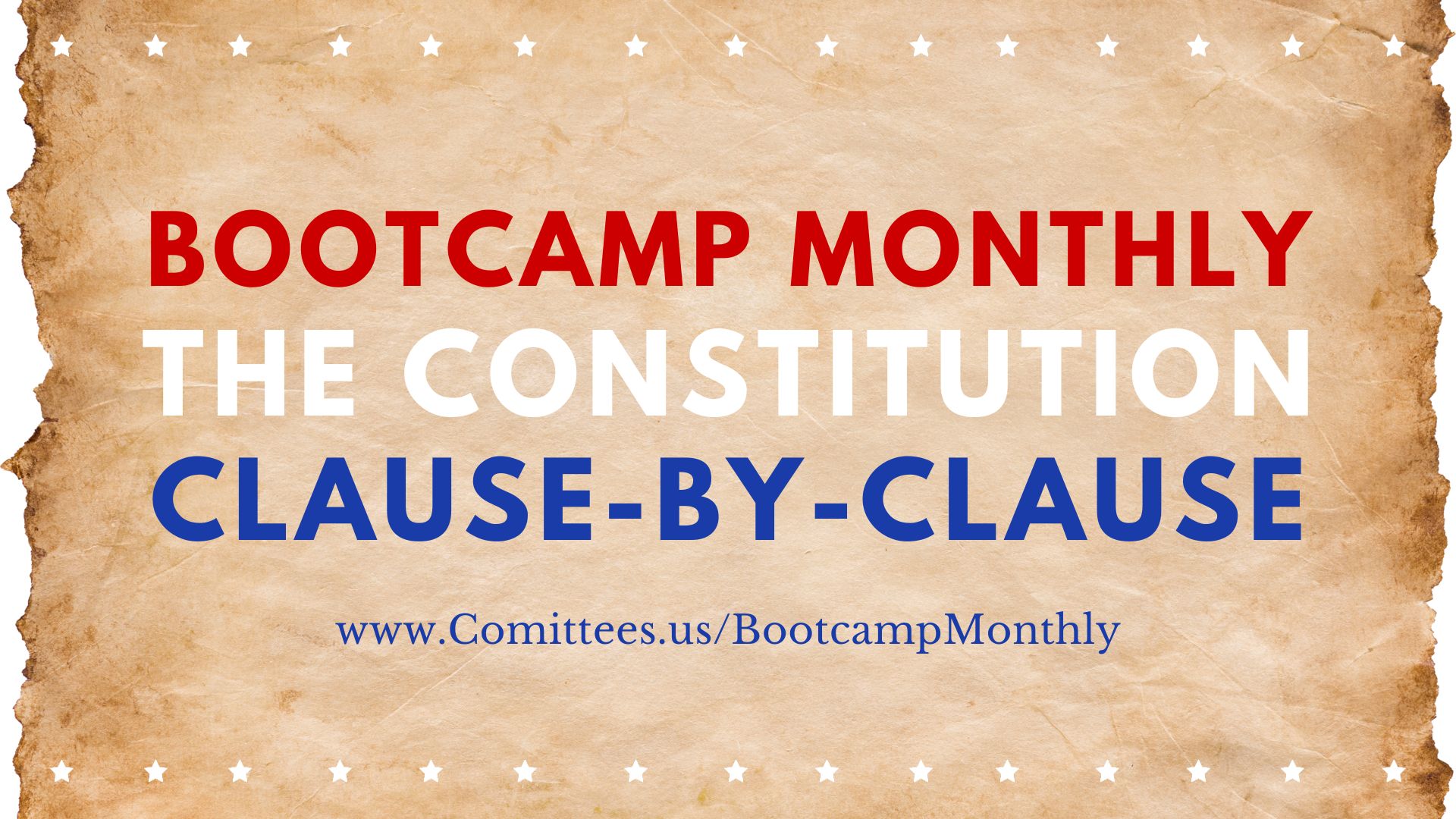Introduction:
Color revolutions don’t begin with tanks or bombs—they begin with cameras, headlines, and hashtags. At the heart of modern regime change lies an invisible weapon: narrative control. Governments fall not because of truth, but because of perception. In the information age, belief is the battlefield—and media is the artillery.
Manufactured Outrage: The Spark That Starts the Fire
Before a color revolution begins, an emotional trigger is needed: a viral video, a protest crackdown, an “unarmed activist” injured or killed. These are not coincidences—they are catalysts. The narrative must provoke moral outrage so intense that it overrides logic, context, or national sovereignty.
- Example: The Arab Spring began with the self-immolation of a Tunisian vendor, amplified into a regional blaze.
- Pattern: Events are isolated, amplified, and distorted to fit a simple binary—oppressor vs. oppressed.
The Role of Western Media Outlets
CNN, BBC, Al Jazeera, and others are not just observers; they are narrative architects. Through selective coverage, emotive language, and constant repetition, they shape public perception to support regime change.
- Key tactic: “One-sided empathy”—highlight the suffering of the uprising while demonizing the government.
- Result: A call for international “responsibility to protect” (R2P), softening the public for sanctions or intervention.
Social Media: The Digital Molotov Cocktail
Facebook, Twitter (X), and TikTok are not neutral platforms—they are psychological terrain where protestors, NGOs, and intelligence-linked influencers coordinate narratives in real time.
- Hashtags: Used to rally global sentiment (#IranProtests, #FreeHongKong, #Occupy).
- Bots and paid influencers: Artificially inflate support or outrage to create the illusion of mass consensus.
The Silencing of the Other Side
The targeted government’s perspective is systematically erased. Whether it’s through de-platforming, labeling (e.g., “dictator,” “war criminal”), or outright censorship, the goal is to make resistance to the narrative seem morally repugnant.
- If you question it: You’re branded a conspiracy theorist, regime apologist, or supporter of tyranny.
- Truth becomes treason in the empire of managed perception.
Psychological Warfare and “Perception Management”
This is not just journalism—it’s psychological warfare. The U.S. Department of Defense has explicitly studied “perception management” as a tool for soft power and non-kinetic warfare.
- Objective: Destabilize from within by undermining legitimacy.
- Tactic: Saturate the public with emotionally charged content, drown out complexity, and manufacture consent.
Who Benefits?
When a regime falls due to media manipulation, the vacuum is filled not by the people, but by Western-aligned NGOs, economic hitmen, and puppet technocrats. The end result is not freedom—but foreign control under the illusion of liberation.
Conclusion:
Media is no longer the fourth estate—it is the first strike. Color revolutions weaponize the moral instinct of the public, turning it against targeted nations. The battlefield is not just in streets—it’s in minds. The war is for perception, and the victors write not just history, but reality.






